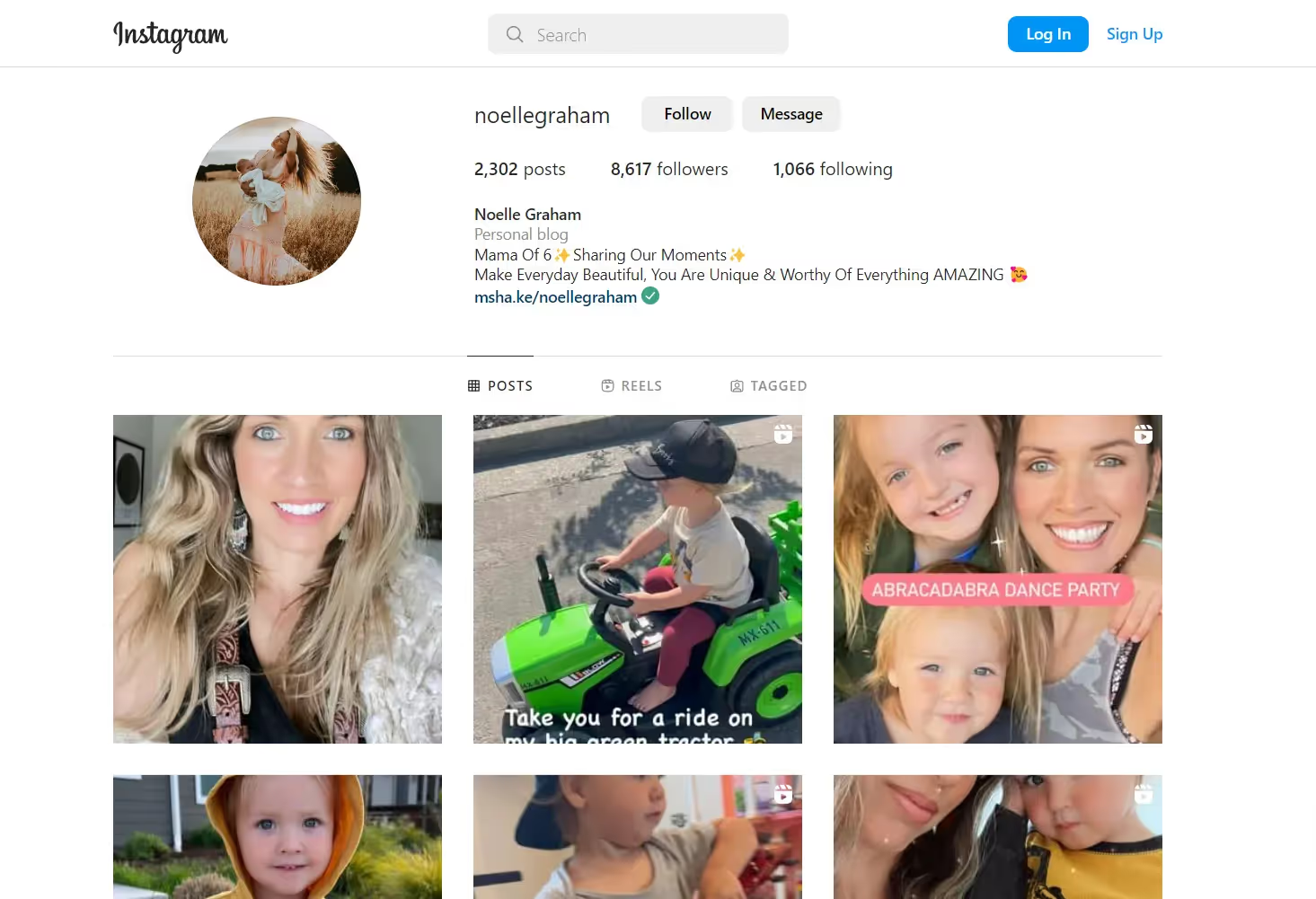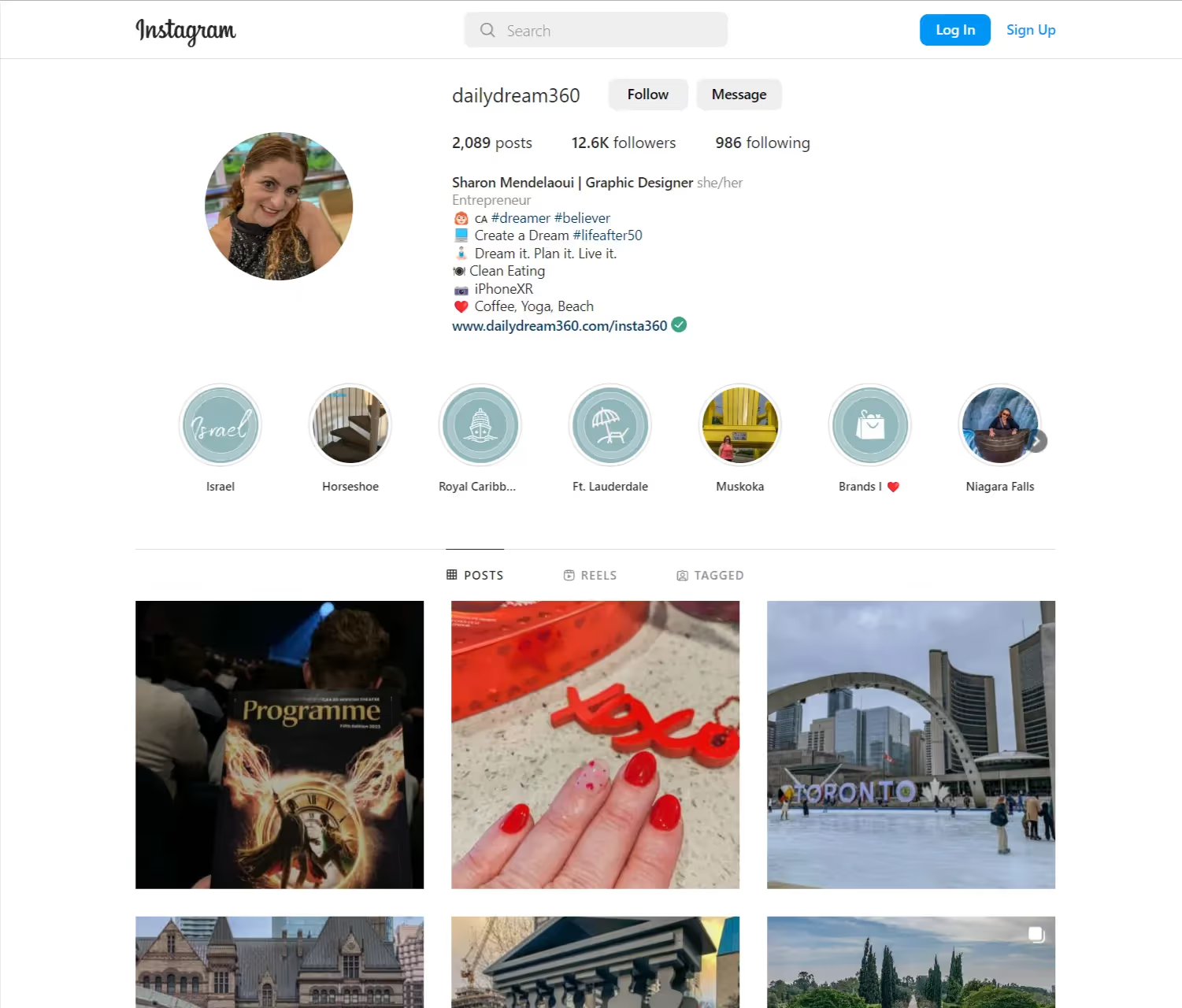Mass advertising doesn't work anymore. The audience has become selective and the focus has shifted from generic marketing to niche and influencer marketing strategies led by influencers on various social media channels.
People trust real people. And so today, social influencers are at the forefront of driving a brand's trust and voice to a broad audience.
As per a report, over one-quarter of consumers make a purchasing decision based on an influencer's recommendation. This says a lot about people's trust in influencers and why you need an effective influencer marketing strategy.
But a winning influencer marketing strategy is more than just reaching out to influencers to promote your product. It's more audience-centric and focuses on driving specific goals. And this article will help you create an effective and successful influencer marketing strategy.
What is Influencer Marketing?
Influencer marketing is a form of social media marketing where brands collaborate with influencers to promote their product and services. In earlier times, celebrity endorsements were the major marketing tactic used to boost brand awareness, but the influencer marketing industry has taken a wide shift in today's digital age.
For example, In 2016, Dunkin Donuts partnered with eight influencers to spread awareness about National Donut Day. Their successful influencer marketing campaign led to a 10x increase in their followers on National Donut Day, with a total reach of 3 million people during the campaign.

Social media platforms, such as TikTok and Instagram, became an avenue for people to create content and build an audience, eventually turning them into huge influencers.
Khaby Lame won 100M followers on TikTok in just 17 months with his unique, humorous, and engaging videos. The best part? He has never spoken a word in his videos.
Why Influencer Marketing?
We have bought various clothes and tried out tools recommended by our favorite influencers on Instagram and LinkedIn. One major deciding factor was trust. We have been following them for a long time and loved their content and the community they built.
All this strengthened our belief in their values and the products they shared. So, that's the best value you get from collaborating with authentic thought leaders and genuine influencers.
Another distinguished advantage is you can send them your free product without any strings attached. If they like the product, they'll promote it organically because it is useful for their target audience. You don't get such a promotion via any other format, do you?
Moreover, they expand your brand reach massively, and even if people don't buy right away, you still get huge exposure and might drive sales later by using retargeting campaigns. All this can move the needle leading to higher influencer marketing ROI.
Also read: The Evolution of Influencer Marketing
What Is An Influencer Marketing Strategy
An influencer marketing strategy is a comprehensive plan that outlines your campaign's goal, outreach, and content strategy for different niche influencers only. A well-thought strategy is like a roadmap with different checkpoints to ensure your campaign is running in the right direction toward your goals.
Lacking an effective influencer marketing strategy often leads to a lack of direction, which affects the possibility of tracking progress while at the same time negatively impacting your brand's relationship with the influencer in question. - Alvin Wei, SEOAnt
Types of Social Media Influencers
Before we move on to the influencer strategy part, it's helpful to learn about different types of influencers for brand partnerships.
Nano influencers
They have less than 10K followers, like Mom nano influencer Noelle Graham.

2. Micro-influencers
They have a 10K-50k following on different influencer marketing platforms. For example, lifestyle blogger Sharon Mendelaoui.

3. Macro influencers
These influencers' following goes beyond 50k, like travel blogger Jean Lee.

4. Mega influencers
Influencers with 1M+ social media followers fall under this category such as Bretman (Da Baddest) Rock.

Key Elements of a Successful Influencer Marketing Strategy
1. Well-defined objectives:
- Clearly define specific and measurable goals for your influencer marketing campaign.
- Examples: increase brand awareness, drive website traffic, boost sales, generate leads, or enhance social media engagement.
2. Target audience identification:
- Conduct thorough research to identify your target audience's demographics, interests, preferences, and online behaviors.
- Align your influencer selection with your target audience to maximize relevance and engagement.
3. Influencer selection criteria:
- Develop specific criteria for selecting influencers based on their relevance to your brand, audience reach, engagement rates, content quality, and alignment with your brand values.
- Consider their expertise, credibility, and authenticity within your niche.
4. Authentic brand-influencer alignment:
- Ensure there is a strong alignment between your brand and the influencer's values, beliefs, and audience.
- Collaborate with influencers who genuinely resonate with your brand to maintain authenticity and credibility.
5. Compelling content strategy:
- Develop a content strategy that aligns with your brand's messaging and resonates with both the influencer's audience and your target audience.
- Encourage influencers to create high-quality, engaging, and authentic content that showcases your products or services.
6. Clear campaign guidelines:
- Clearly communicate your campaign objectives, expectations, brand guidelines, and key messaging to influencers
- Provide them with detailed instructions, including content format, hashtags, links, and any necessary legal disclosures.
7. Effective communication and relationship-building:
- Establish open and consistent communication channels with influencers throughout the campaign.
- Foster a positive and collaborative relationship by actively listening to their ideas, providing feedback, and addressing any concerns or questions.
8. Performance tracking and measurement:
- Implement robust tracking mechanisms to measure the performance of your influencer marketing campaigns.
- Monitor key metrics such as reach, engagement (likes, comments, shares), click-through rates, conversions, and ROI.
9. Continuous optimization:
- Regularly analyze campaign data and insights to identify areas for improvement and optimization.
- Adjust your strategy based on the performance of different influencers, content formats, messaging, and target audience segments.
10. Authentic disclosure and legal compliance:
- Ensure that influencers comply with legal requirements, such as disclosing their partnerships with your brand according to FTC guidelines.
- Educate influencers about the importance of transparently disclosing sponsored content to maintain trust and compliance with regulations.
Note: Remember, each influencer marketing strategy is unique and should be tailored to your specific brand, target audience, and campaign goals.
How to Develop an Effective Influencer Marketing Strategy
This section will help you create an effective strategy that’ll help you drive higher engagement via your influencer marketing campaigns:
Step 1: Define your target audience
Depending on this step, create your audience persona as your campaign type and the influencers you want to collaborate with. So, look into the following aspects:
- Demographics: Attributes like your audience's age, gender, language, ethnicity, nationality, job profile, etc., all come under the demographic details.
- Geography of the audience: Also, figure out where your audience lives. Geography matters when you have a location-specific product or service, like a local restaurant or shopping center.
- Social media channel they are most active: Targeting the right audience on the wrong channel will give you a different result. So, figure out where your audience is most active.
- Major pain points they face: This is imperative as once you have a list of pain points, you can define your content strategy more clearly.
To collect this information, look into analytics tools like Google Analytics, or talk to your sales or customer support team to collect major pain points of your audience.
Figuring out your target group will also help you find influencers with a similar target market.
Step 2: Begin with a clear objective in mind
Once you're done with your audience analysis, set your campaign goal. Do you want to increase your product consideration, or do you want to increase sales and drive revenue for your business? Or do you want to reach a completely new target audience?
This step is crucial because your chosen influencer will vary depending on your particular campaign and's objective. Here's a table to illustrate that point.
%20(1000%20%C3%97%20800px).avif)
Step 3: Consider the available budget and payment structure.
Look into the available budget for the campaign and decide which you would like to partner with. Many factors impact influencer pricing, including
- The number of posts: The more posts you want, the more you'll have to pay. you want from them
- Their follower count: Influencers with 10K would charge way less than those with more than 100k followers
- Influential power: the impact they create and the level of reach and engagement on their post
- The social media channel they use: Influencers on Twitter charge less than influencers on Instagram or Youtube
- Agency fees (if you hire an influencer through an influencer marketing agency)
You can work with nano or micro-influencers if you have a low budget, say, less than 10,000 USD. Within this budget, you can create many posts to meet your goals.
But, with a huge budget, you can go for macro or mega influencers.
Also, figure out how will you pay influencers for content creation. You can either pay them an upfront fee or share a portion of the revenue they'll drive via their posts.
Step 4: Identify the right channel for influencer marketing campaigns
The right social media platform or channel is as crucial as finding the right audience. If you choose a channel without your audience, you'll waste money, time, and other resources. So, once you clearly understand your target audience, and find the channel they're most active on.
For instance, TikTok is the most used channel among GenZ, so it's a rational decision to run your influencer campaign here if your target audience falls into that group. But, if your audience is more inclined towards business, we would say Linked In or Twitter would be your best bet.
Step 5: Find influencers and start outreach
One key component of finding the right influencer is trust. To gain trust, they must share content that resonates with their audiences. The trust can be seen by analyzing the engagement rate on their social media posts.
How to decide if an influencer is right for my brand?
Follow these tips to vet potential brand partners:
- Do they post consistently and engage with the community they're building?
- Do they target similar niche audiences that you are trying to reach?
- Do their values align with your brand values?
- Do you like the content they create?
Besides, you can also run a verification check to detect fake followers or engagement rates on their posts using influencer marketing tools.
Once you have a list of potential influencers, start reaching out to them. Here's an email and DM template to use:
Email Template for Influencer Outreach
Subject: Collaboration Opportunity with [Influencer's Name]
Hi [Influencer's Name],
I've been following your amazing work in the [Niche] industry and believe we could create something great together. I represent [Your Brand Name], which offers [brief description of your brand and its mission].
We are interested in collaborating with you on a [Types of collaboration, such as sponsored content, blog posts, video, social media campaign, or product reviews]. Your unique perspective and expertise would bring our brand a fresh and valuable perspective.
In return, we are happy to offer [compensation or incentive, such as payment, exclusive access to new products, or exposure to our audience]. We can set up a quick call to discuss the details if you're interested.
Thank you for your time, and we look forward to the possibility of working with you.
Best regards,
[Your Name]
Direct Message (DM) Template for Influencer Outreach
Hi [Influencer Name],
I came across your profile and was impressed by your content in [niche]. I would love to collaborate with you on a project with my brand [Brand Name]. Your style and audience would greatly fit our product/service.
Would you be interested in working with us? We'd love to chat more about potential ideas.
Best regards,
[Your Name]
Step 6: Do content research and create a campaign brief
It's time to work on your influencer marketing campaign content. This is where you outline the deliverables you'll get from each influencer (if you're working with multiple influencers), timeline, Key performance indicators (KPIs) to track, etc.
Once you have outlined everything, share the details with the influencers. It's also a good time to draw a contract mentioning legal guidelines, payment structure, etc. To facilitate smooth communication and avoid any future disputes.
Step 7: Measure your influencer marketing campaign performance
The last step is about how you measure the success of an influencer's campaign. How will you measure the influencer marketing ROI? What metric would you track? How will you optimize your strategy to meet your marketing goals? All these questions must be answered during this step.
For example, you can use UTM parameters for tracking links from a particular influencer campaign. In addition, use influencer analytics tools to detail different performance metrics across different channels on social media comprehensively.
Checklist For Influencer Marketing Strategy
Working with influencers, especially for the first time, can be complicated, but the work becomes easier if you have the right checklist to guide you. So, steal this comprehensive influencer marketing checklist to run an effective campaign.
%20(4).avif)
Also read: The Future of Influencer Marketing: Predictions and Trends for 2023
Template For Influencer Marketing Strategy
The Template for Influencer Marketing Strategy is a comprehensive framework designed to guide businesses in developing effective influencer marketing campaigns. It provides a structured approach to identify goals, target audience, and suitable influencers, while emphasizing the importance of authenticity and aligning brand values. This template encompasses key elements such as content strategy, clear guidelines, performance tracking, and continuous optimization. By following this template, businesses can create impactful influencer partnerships, drive brand awareness, engage their target audience, and achieve their marketing objectives.
You can access the Google Sheets template for the same here.

Best Practices for an Effective Influencer Marketing Strategy
1. Micro-influencer targeting
- Focus on working with micro-influencers (influencers with smaller but highly engaged audiences) who have a strong connection to your niche market.
- Micro-influencers often have higher engagement rates and are more affordable, allowing you to reach a targeted audience effectively.
2. User-generated content (UGC) campaigns
- Encourage influencers and their followers to create and share user-generated content related to your brand or products.
- Run contests or giveaways that motivate followers to participate, generating authentic and engaging content.
3. Influencer authenticity and niche relevance
- Prioritize influencers who have a genuine passion and expertise in your specific niche.
- Authenticity is key, as audiences are more likely to trust and engage with influencers who have a genuine connection to the products or services they promote.
4. Long-term partnerships
- Build long-term relationships with influencers to establish brand loyalty and continuity in messaging.
- Long-term partnerships allow influencers to become true brand advocates, deeply understanding and endorsing your products or services.
5. Influencer-generated content
- Leverage the creativity and expertise of influencers by involving them in the content creation process.
- Collaborate with influencers to co-create content that seamlessly integrates your brand's messaging while showcasing their unique style and personality.
6. Performance-based compensation
- Consider implementing performance-based compensation models tied to specific KPIs, such as engagement, conversions, or sales.
- This approach incentivizes influencers to drive meaningful results and ensures a mutually beneficial partnership.
7. Influencer tracking and measurement
- Utilize tracking tools and analytics platforms to monitor the performance and impact of your influencer campaigns.
- Track metrics such as reach, engagement, click-through rates, conversions, and return on investment (ROI) to assess the effectiveness of your influencer partnerships.
8. FTC compliance
- Ensure that influencers comply with the Federal Trade Commission (FTC) guidelines regarding sponsored content disclosures.
- Well-defined objectives:
- Clearly define specific and measurable goals for your influencer marketing campaign.
Examples: increase brand awareness, drive website traffic, boost sales, generate leads, or enhance social media engagement.
Target audience identification: - Conduct thorough research to identify your target audience's demographics, interests, preferences, and online behaviors.
Align your influencer selection with your target audience to maximize relevance and engagement.
Influencer selection criteria: - Develop specific criteria for selecting influencers based on their relevance to your brand, audience reach, engagement rates, content quality, and alignment with your brand values.
Consider their expertise, credibility, and authenticity within your niche.
Authentic brand-influencer alignment: - Ensure there is a strong alignment between your brand and the influencer's values, beliefs, and audience.
Collaborate with influencers who genuinely resonate with your brand to maintain authenticity and credibility.
Compelling content strategy: - Develop a content strategy that aligns with your brand's messaging and resonates with both the influencer's audience and your target audience.
Encourage influencers to create high-quality, engaging, and authentic content that showcases your products or services.
Clear campaign guidelines: - Clearly communicate your campaign objectives, expectations, brand guidelines, and key messaging to influencers.
Provide them with detailed instructions, including content format, hashtags, links, and any necessary legal disclosures.
Effective communication and relationship-building: - Establish open and consistent communication channels with influencers throughout the campaign.
Foster a positive and collaborative relationship by actively listening to their ideas, providing feedback, and addressing any concerns or questions.
Performance tracking and measurement: - Implement robust tracking mechanisms to measure the performance of your influencer marketing campaigns.
Monitor key metrics such as reach, engagement (likes, comments, shares), click-through rates, conversions, and ROI.
Continuous optimization: - Regularly analyze campaign data and insights to identify areas for improvement and optimization.
Adjust your strategy based on the performance of different influencers, content formats, messaging, and target audience segments.
Authentic disclosure and legal compliance: - Ensure that influencers comply with legal requirements, such as disclosing their partnerships with your brand according to FTC guidelines.
Educate influencers about the importance of transparently disclosing sponsored content to maintain trust and compliance with regulations.
Remember, each influencer marketing strategy is unique and should be tailored to your specific brand, target audience, and campaign goals. - Regenerate response
Send a message... - Free Research Preview. ChatGPT may produce inaccurate information about people, places, or facts. ChatGPT May 24 Version
- Clearly communicate and educate influencers about the importance of transparently disclosing their relationship with your brand to maintain trust and compliance.
9. A/B testing and optimization
- Continuously test and optimize your influencer marketing campaigns.
- Experiment with different influencers, content formats, messaging, and target audience segments to identify what works best for your brand and refine your approach accordingly.
10. Post-campaign analysis and feedback
- Conduct a thorough post-campaign analysis to evaluate the overall performance and impact of your influencer marketing efforts.
- Collect feedback from influencers on their experience working with your brand to identify areas for improvement and ensure better collaborations in the future.
Also read: The Role of Social Listening in Data-Driven Influencer Marketing
Key Takeaways
Influencer marketing works because it widens your brand's reach and amplifies your brand voice. But, you need a strategic approach to carry out these influencer campaigns.
Alex Milligan, Co-Founder & CMO of, NuggMD, points out that with an influencer marketing strategy, you might be able to reach certain platforms and, even worse, reach your intended audience. With a good influencer strategy in place, it's easier to measure the success of a campaign and understand how to improve it.
We agree with his point as a strategy works like a roadmap to check your campaign's progress and build meaningful influencer partnerships.

.gif)







